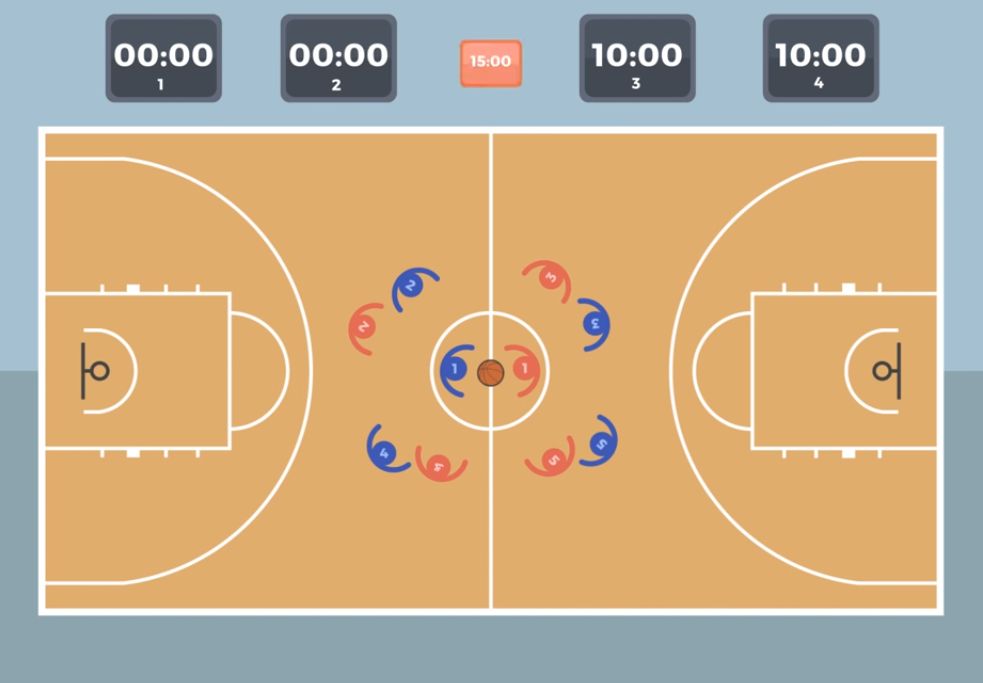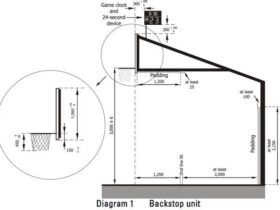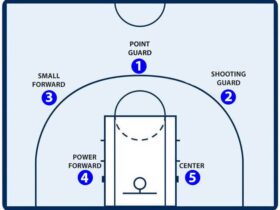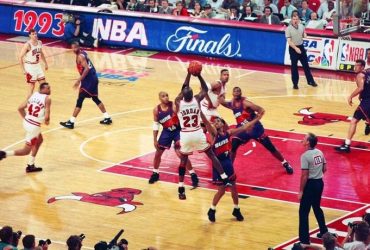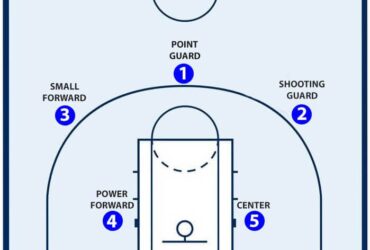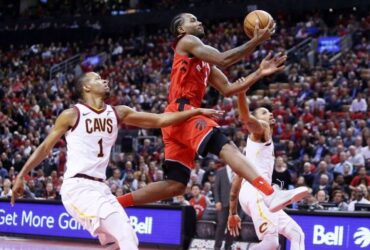Basketball is a sport that is loved by many people. In fact, there are various kinds of official matches being held. As is well known, all official matches must have their own rules. Likewise with basketball. There are various rules in basketball that you should know.
The rules of the game are an important principle that completely controls the game. The rules made by the Technical Commission and known as the Official basketball rules are the most widely used form of regulation. Come on, find out more about the rules in basketball.
Reasons for the Need for Regulations in Basketball
Of course, there are reasons for making rules for basketball. These rules were created with a purpose and passion for the players. That way, all teams can compete well without cheating. The rules are indeed made to involve all personnel in the team. So, both coaches and players must all understand the rules.
With a deep understanding between the coach and also the players related to the rules. Then, there will be synchronization and there will be no suicide moves in the game later. The players can also coordinate easily without having to wait for orders from the coach. Players, as well as coaches, must be able to understand the rules well to play.
Official Rules
In basketball games, there are official institutions that take part in making the rules. All parts of the rules in the game rules governing teams then referees to fixtures are made by FIBA and NBA. This organization is specifically for basketball so the rules given are also good. This is a list of rules in the game.
Field Size Rules
One part of the regulations that are carried out is the size of the field. There are size differences in NBA and FIBA rules. However, all of them must use a level playing field and do not have a hard surface. That way, the movement is easier because there are no obstacles. Here’s a detailed list of sizes:
FIBA Size
If using the FIBA field size, the length used on the field is 28 meters. Then, the width is 15 meters. Then, there is also the diameter of the middle circumference, which is 3.6 meters. In addition, there must be a distance of 3 point line from the direction of the basketball hoop. The distance is 6.75 meters. Meanwhile, 6.6 meters use a corner spot. There is also a 10 foot high basketball hoop.
NBA Size
Not much different from FIBA, the NBA also makes rules in basketball where the length is 28.65 m and the width is 15.24 m. Then, there is also a circle with a diameter of 3.66 meters. The height used is 3.05 meters and the distance of the 3 point line from basketball is 7.24 meters for the center area. If from the corner, it takes 6.7 meters.
Player rules
There are also rules given to the players in the game. So, the rules already stipulate that each basketball team has 12 people. However, those who will join are 5 people, and the rest are reserved these reserves may alternate in later matches. Then, also pay attention to the rules for the costumes of the players:
- The t-shirt must have almost the same color on the front and back. T-shirts should also be tucked into trousers when playing.
- Pants with the same dominant front and back color but not necessarily the same as the shirt.
- Must have 2 packs of uniforms. The first is the costume that will be used at home and used when away or to the opponent’s place.
- The two sets of uniforms must have different colors
- The numbering on the uniforms uses a different FIBA and NBA regulatory system. Use 4-15 if FIBA and 0-99 if NBA.
- All players wear almost the same basketball shoes and socks
- All player numbers are different, place them on the chest and back. The width and height in the chest number are 10 × 20 cm and the back is 20 × 20 cm.
- The use of a decker and hand band that reaches a maximum of 5 cm.
- Remove all accessories in the match
Ball Size Rules
After setting the player in various ways. So, the rules in other basketball sports are in the size of the ball that will be used. Setting the size itself is much more troublesome because it is different from the various standards used.
Standard ball size
In standardized balls, the ball is made using a rubber material and coated with another material that looks like leather. Then, the weight itself starts from 600 grams with a maximum of 650 grams. The ball also has a circumference from 75 to 78 cm only. There is a ball pressure to be aware of which is 4.26 to 4.61 psi.
FBA, NBA, NCAA, and official
Using standards derived from FIBA, basketballs have a circumference of 749mm to 780mm and weigh from 597 to 650g. Of course, it is also different from the standard that has been ah determined by the NBA. The ball size must reach 749.3 mm and a maximum of 755.65 mm. It weighs only 623.7 grams.
In the NCAA standard itself, the size of the ball in circumference is 749.3 mm up to 762 mm. However, the weight of the basketball itself is 567 to 623.7 grams. There is also a division by match class. So, there is a size 7 for the professional type. Then, there is also a size 6 for Junior high school. Then, 5 is the exam for primary school.
Rules for Referees, Desk Officers, and Football Commissioners
The referee in a basketball game consists of one referee or also uses two umpires. Then, the work carried out will be assisted by desk officers and also one commissioner. As a desk clerk, all you have to do is record numbers and also make time arrangements. Both the referee and the table clerk wear the same uniform.
The commissioner’s job is also simple where he only needs to assist in supervising basketball matches. You can lighten the work of other officers. Then, the referee has an additional prohibition to have with both teams on the pitch. Remember, it is not permissible to communicate support to one team only.
Time rule
Another rule of basketball is the time rule. There are two rules available in time namely the arrival rule and also the time of the match. Arrival time rules are preparations before the start of the match where the players must be present first. To avoid late players and so on, assemble 30 minutes before the start.
In the game itself, there is a time setting for 4 periods. Each existing period will take ten minutes. Between periods one and two in the first half, there is a game-time lag of 2 minutes. Likewise in round two. For breaks in rounds one and two, 15 minutes are given. There will be an additional period of 5 minutes if the result is the same.
Equipment and tools
There are several rules regarding competition facilities and infrastructure:
- Timer
- Scoreboard
- 24 seconds
- Match hours
- Two voice signals
- Score sheet
- Pointer for foul player
- Pointer in team foul
- Arrows for alternating
- Suitable lighting
Ball Game Rules
In addition to the rules relating to equipment and also equipment used in the game. So, there are also other rules in playing the ball:
- The ball goes into the opponent’s ring and a new score is calculated
- The ball must be held between the palms
- Can’t punch the ball
- Can’t carry the ball without dribbling more than 3 steps
- When the ball goes out of bounds due to an opponent’s fault. Then, the player gets a chance to throw in for 5 seconds. If more, this throw-in will be awarded to the opposing side.
- The owner of the highest score in the game is the winning team
In-Game Violations
To get positive or fair play. So, there are various kinds of rules relating to possible violations as well. Here’s a list of things not to do in the game:
- Touching is a form of violation where someone touches the player’s hand while shooting.
- Pushing is pushing the opponent when shooting the ball
- Jumping is a move where the player jumps to shoot but is undone
- Traveling is also part of the offense where the player goes more than 3 steps without dribbling with the ball in hand
- A technical foul is an error for filing an objection to a decision made by the referee in a match. The referee is following the rules in the sport of basketball.
- Unsportsmanlike fouls are part of a fatal violation where players appear unsportsmanlike and try to harm the opposing party.
- Defensive fouls are offenses that the opponent commits to players who are in a defensive position.
- A personal foul in the game means the player will be disqualified. This is very rare because there is a fairly large maximum error limit. So, a player may only commit a violation 4 times in a match.
- An offensive foul is a violation committed by a player when attacked by an opposing player.
- Team foul is an advantage given by the referee to the player. So, a team will get the freedom to shoot into the ring without interruption. This is awarded when the opposing team has committed 5 fouls.
- A 3-second violation is a condition when a player misses 3 seconds, according to the name of the violation. So, no free shots are taken by the player after the attack. When you have spent 3 seconds shooting.
- An 8 or 10-second violation is a violation that is not much different from the previous type. So, the player does not shoot the ball or pass it to a teammate after the attack has been made. In addition, it exceeds 8 to 10 seconds.
- 24 or 30-second violation in which the ball is not placed in the opponent’s ring after 24 to 30 seconds of attack have elapsed.
- The back ball is the last offense for passing the ball back to the team after passing the team area.
Thus a list of rules in basketball must be known. You can compete easily if you understand all the rules. Get team wins according to the rules.

